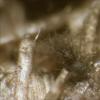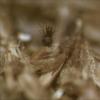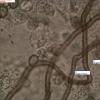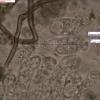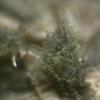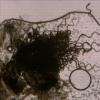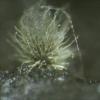
07-12-2025 16:07
Arnold BüschlenHallo, ich habe in einer Moos-Aufsammlung (epiphy

08-12-2025 21:04
Mark Stevens"Hello everyone,I'm relatively new to microscopy (

09-12-2025 12:06
 Andgelo Mombert
Andgelo Mombert
Bonjour,Je recherche l'article concernant Hypobryo

08-12-2025 18:59
 Lothar Krieglsteiner
Lothar Krieglsteiner
.. found by a seminar-participant, I do not know t

08-12-2025 17:37
 Lothar Krieglsteiner
Lothar Krieglsteiner
20.6.25, on branch of Abies infected and thickened

16-03-2014 22:00
Hello,I found this species a few months ago but ha

08-12-2025 13:39
Thomas Læssøehttps://svampe.databasen.org/observations/10572899
unknown chaetomium
Joop van der Lee,
13-11-2013 14:20
 Found on horse dung also found on sheep dung in the same area.
Found on horse dung also found on sheep dung in the same area.Perithium is covered with non septated, non crustated, thickwalled curled hairs 2.7u8-3.48 um wide
Upper part has rigid stiff and curled, septated thick walled hairs 4.27-5.22 um wide.
Asci: 8-spored, 42.39x11.24 um
Spores: lemon shaped, 8.51-9.38xs7.41-7.96x6.32-6.91 um
When young they have an olive-green colour.
It also has a funnel to assist in releasing spores, when process is completed only the fruitbody with rigid non curling hairs remain.
Norbert Heine,
13-11-2013 17:45

Re : unknown Chaetomium
Hello Joop,
species of the genus Chaetomium are difficult to determinate!
It needs a lot of literature like Arx et al - The Ascomycete Genus Chaetomium, 1986 or Doveri - An update on the genus Chaetomium, PdM 29, 2008.
And it needs a lot of experience and patience.
Even then the determination is not easy!
There are some species with nearly the same spore size and similar hairs!
Maybe that your species is Ch. crispatum, but Ch. convolutum is also an option.
The common Ch. bostrychodes has similar, but slightly smaller spores.
An updated world wide key you can find in the latest work by Francesco Doveri.
http://www.mycosphere.org/pdfs/MC4_4_No17.pdf
Best wishes
Norbert
species of the genus Chaetomium are difficult to determinate!
It needs a lot of literature like Arx et al - The Ascomycete Genus Chaetomium, 1986 or Doveri - An update on the genus Chaetomium, PdM 29, 2008.
And it needs a lot of experience and patience.
Even then the determination is not easy!
There are some species with nearly the same spore size and similar hairs!
Maybe that your species is Ch. crispatum, but Ch. convolutum is also an option.
The common Ch. bostrychodes has similar, but slightly smaller spores.
An updated world wide key you can find in the latest work by Francesco Doveri.
http://www.mycosphere.org/pdfs/MC4_4_No17.pdf
Best wishes
Norbert


